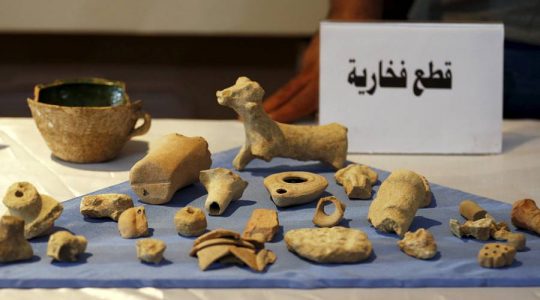
How the Islamic State terrorist group used culture to fund its terrorism activities
An important source of Daesh’s funding came from the looting and illicit sale of cultural artefacts in Syria and Iraq. It is estimated that the terrorists made nearly $100 million a year from these transactions. More recently, after repeated defeats, Daesh started to produce and sell counterfeit artefacts to further fund itself.
The cultural heritage of Syria and Iraq is thousands of years old, and proof that the region can survive through all challenges. Much of this heritage can be found in Iraq’s Mosul Museum, which under Daesh occupation was looted, robbed and hundreds of historical artefacts were destroyed. The museum has since partially reopened, welcoming guests for an exhibition earlier this year.
Daesh’s disrespect for the cultural heritage of Syria and Iraq also aimed to destroy the region’s history. But today, Iraq and Syria are working to eliminate Daesh’s ideology and rebuild their unique heritage. Cultural heritage is critical to forming the identity of a country, and provides a unifying base for citizens. Protecting cultural heritage means protecting the historical legacy of a nation.
Recognizing the importance of cultural heritage as a symbol of peace, as well as a potential weapon for terrorists, the Global Coalition considers it an integral part of its counter-Daesh finance strategy. Made up of nearly 40 members and observers, the Global Coalition’s Counter-Daesh Finance Group is leading global efforts to prevent the use of cultural heritage as a source of financing for terrorism, along with other counter-Daesh finance initiatives.
Source: Global Coalition





